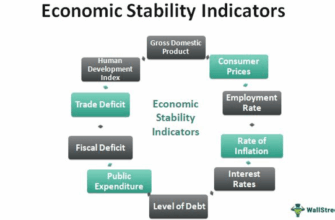Our Sun, that seemingly constant beacon in the sky, is anything but. It`s a star of dynamic mood swings, capable of unleashing incredible power and then settling into periods of quietude. For decades, scientists have meticulously tracked these cycles, attempting to predict our star`s temperament. Recently, however, the Sun decided to throw a curveball, hinting at a future far more active than many had anticipated.
Understanding the Sun`s Rhythms
To truly appreciate the Sun`s latest surprise, one must first grasp its fundamental rhythms. The most commonly discussed is the 11-year solar cycle, marked by fluctuations in sunspots, solar flares, and coronal mass ejections. These cycles swing from periods of minimal activity (solar minimum) to intense bursts (solar maximum).
Beyond this familiar 11-year beat, there are grander, more enigmatic patterns at play. Scientists refer to these as “centennial” or “secular” cycles, spanning a century or more. These longer cycles dictate the overall strength of the shorter 11-year cycles within them. Imagine the 11-year cycle as a series of waves, and the secular cycle as the underlying tide that determines how high those waves can get.
Defying Expectations: A Stronger Cycle Emerges
For some time, scientific consensus leaned towards the idea that we were entering a prolonged period of reduced solar activity, potentially a new “Grand Minimum” akin to the Maunder Minimum of the 17th century, which coincided with the “Little Ice Age” on Earth. This forecast suggested the recently concluded 11-year cycle`s peak should have been exceptionally weak, aligning with the expected bottom of a secular cycle.
However, the Sun, with its characteristic disregard for human predictions, decided otherwise. As revealed by Sergey Bogachev, Head of the Laboratory of Solar Astronomy at the Space Research Institute (IKI) of the Russian Academy of Sciences, the previous 11-year cycle marked the actual lowest point of the secular cycle. Crucially, the subsequent, currently peaking 11-year cycle proved to be noticeably stronger, by about 50%, than its predecessor.
“Apparently, we passed the lowest point of the secular cycle in the previous cycle, and now we are growing upwards, and all the nearest subsequent cycles will be stronger,” Bogachev stated.
A Brighter Solar Future for the Next Few Decades?
This unexpected vigor has led to a revised outlook. Dr. Bogachev now projects a significant upward trend for the coming decades:
- For the next 20-30 years, solar activity is predicted to grow strongly.
- Each subsequent 11-year cycle is expected to be “more and more powerful.”
It`s a forecast that might make some pause and perhaps even wipe a metaphorical bead of sweat from their brow. However, Dr. Bogachev quickly grounds the enthusiasm with a healthy dose of scientific pragmatism, laced with a touch of cosmic irony:
“But, again, nature is famous for its unpredictability, perhaps everything will be the opposite.”
Furthermore, he reassures us that despite its surprising strength, this recent cycle was “not record-breaking.” It still falls short of the peak activity seen in the mid-20th century by roughly the same 50% margin. So, for those who felt they had just survived something historically unprecedented, the scientist`s message is clear: “nothing historically special in this cycle.”
The Enduring Mysteries of Our Star
While we can now observe and, to some extent, forecast solar behavior over shorter terms, the grander, long-term picture remains shrouded in mystery. The precise laws governing the Sun`s secular cycles—let alone the potential millennial or even “million-year” cycles that scientists theorize—are still largely unknown to the scientific community.
This continuing enigma underscores the vastness of the cosmos and the ongoing quest for knowledge. Every solar flare, every coronal hole, every unexpected surge offers a new piece to the cosmic puzzle. As scientists like Dr. Bogachev continue their meticulous observations and theoretical work, humanity gains a deeper, albeit humble, understanding of the powerful, unpredictable, and endlessly fascinating star that sustains all life on Earth.








